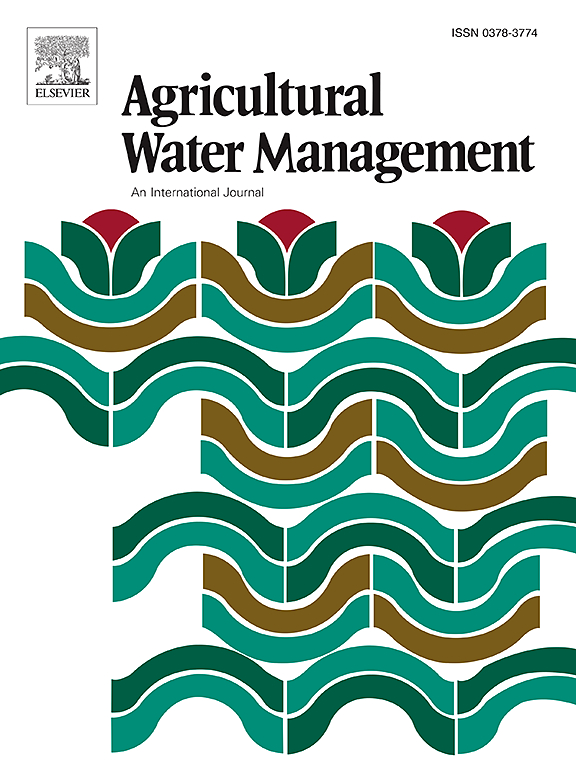Optimizing nutrient removal of algal-bacterial symbiosis system for treating low C/N farmland drainage
IF 5.9
1区 农林科学
Q1 AGRONOMY
引用次数: 0
Abstract
The removal of nitrogen from farmland drainage is challenging due to the typically low carbon-to-nitrogen (C/N) ratio. In this study, an algal-bacterial symbiosis system was developed to treat low C/N farmland drainage. The investigation focused on the nutrient removal rates, microbial growth characteristics, extracellular polymeric substances (EPS) content, and microbial community species composition under varied disturbance frequencies and light conditions (intensity and duration). Results demonstrated that the optimal operating conditions were three disturbances per 24 h, a light intensity of 20,000 lux, and a 16-hour lighting duration. Under these conditions, the average removal rates of soluble chemical oxygen demand, total nitrogen, total phosphorus, nitrate nitrogen, and ammonia nitrogen reached 45.1 %, 73.3 %, 98.1 %, 63.1 %, and 97.3 %, respectively. Compared to continuous disturbance, intermittent disturbance reduced energy consumption by over 90 % and promoted higher biomass accumulation, with an average dry weight of 508.7 mg L−1 and chlorophyll-a concentration of 521.0 μg L−1. Meanwhile, a robust microbial community and a balanced bacterial-to-algal gene copy ratio (exceeding 25:1) were critical for nutrient removal. The optimized system facilitated symbiote secretion of bound polysaccharides (45.2 μg L−1, double that of other reactors), promoting the formation of robust biofilms and enhancing nutrient removal. This work provides a technical reference for improving nutrient removal in low C/N wastewater treatment processes.
优化藻菌共生系统对低 C/N 农田排水的营养物去除效果
由于农田排水的碳氮比(C/N)通常较低,因此从农田排水中去除氮具有挑战性。本研究开发了一种藻菌共生系统,用于处理低碳氮比农田排水。调查的重点是不同干扰频率和光照条件(强度和持续时间)下的营养物去除率、微生物生长特征、胞外聚合物物质(EPS)含量和微生物群落物种组成。结果表明,最佳操作条件为每 24 小时三次干扰、光照强度为 20,000 勒克斯、光照时间为 16 小时。在这些条件下,可溶性化学需氧量、总氮、总磷、硝酸盐氮和氨氮的平均去除率分别达到 45.1%、73.3%、98.1%、63.1% 和 97.3%。与连续干扰相比,间歇干扰可减少 90% 以上的能量消耗,并促进更高的生物量积累,平均干重为 508.7 mg L-1,叶绿素-a 浓度为 521.0 μg L-1。同时,强大的微生物群落和平衡的细菌与藻类基因拷贝比(超过 25:1)对于营养物质的去除至关重要。优化后的系统有利于共生体分泌结合多糖(45.2 μg L-1,是其他反应器的两倍),促进了稳健生物膜的形成,提高了养分去除率。这项工作为提高低 C/N 废水处理工艺的营养物去除率提供了技术参考。
本文章由计算机程序翻译,如有差异,请以英文原文为准。
求助全文
约1分钟内获得全文
求助全文
来源期刊

Agricultural Water Management
农林科学-农艺学
CiteScore
12.10
自引率
14.90%
发文量
648
审稿时长
4.9 months
期刊介绍:
Agricultural Water Management publishes papers of international significance relating to the science, economics, and policy of agricultural water management. In all cases, manuscripts must address implications and provide insight regarding agricultural water management.
 求助内容:
求助内容: 应助结果提醒方式:
应助结果提醒方式:


